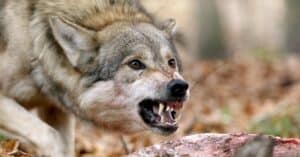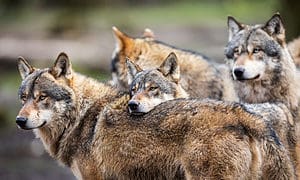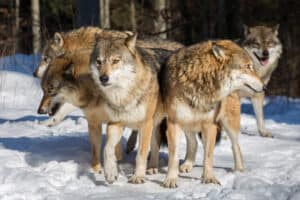Social, cunning, and perseverant, wolves employ several strategies when tracking, pursuing, and taking down their prey. Capable of both group and solitary hunts, wolves are opportunistic predators, maintaining flexibility to capture a range of targets. So, how do wolves hunt, and what strategies do these impressive animals use?
Read on to find out!
1. How Do Wolves Hunt: In Cooperation
Wolves are highly social animals, living together in familial packs. They also hunt in collaboration and, in doing so, can take down prey much larger than an individual wolf. Wolves communicate primarily through body language and vocalizations to coordinate their hunts. When spread out over long distances, wolves will howl back and forth to communicate their locations to each other. This information is vital when driving a herd toward favorable hunting environments.
One study found that the pack size could affect the hunt’s success depending on the hunted species. A study observing Yellowstone wolf packs found that 2-6 wolves represented the highest success rate for elk hunts, with success tapering off after six wolves. The theory is that the hunt becomes disjointed with smaller prey when the pack number becomes too large. However, researchers found that 9-13 wolves had the best success in pursuing and taking down this much larger and more difficult prey for bison hunts.

When hunting larger prey, such as ungulates, wolves rely on pack cooperation.
2. Prey Testing
When approaching a herd of elk, for example, wolves will perform what is known as prey testing. They will work together to detect any vulnerabilities or weaknesses in an individual in the herd. They do so by pursuing the herd and singling out the weakest member. This individual may be very young, old, sick, or injured. As endurance hunters, wolves can chase their prey over several miles while they work to isolate their target.

To determine the best target among a herd, wolves will work together to test their prey, singling out weakened individuals.
©MacNulty DR, Tallian A, Stahler DR, Smith DW / CC BY 4.0 DEED – Original / License
3. How Do Wolves Hunt: Tracking
Not only are wolves endurance hunters that will chase prey for miles, but they will also track their prey for days before beginning active pursuit. During the tracking part of their hunt, wolves will assess for weaknesses and look for terrain that favors the pack in a hunt. If they are hunting elk, for example, they know to attempt to drive the herd away from open-plan environments. Instead, they may try to drive them into wooded areas or through heavy snow.
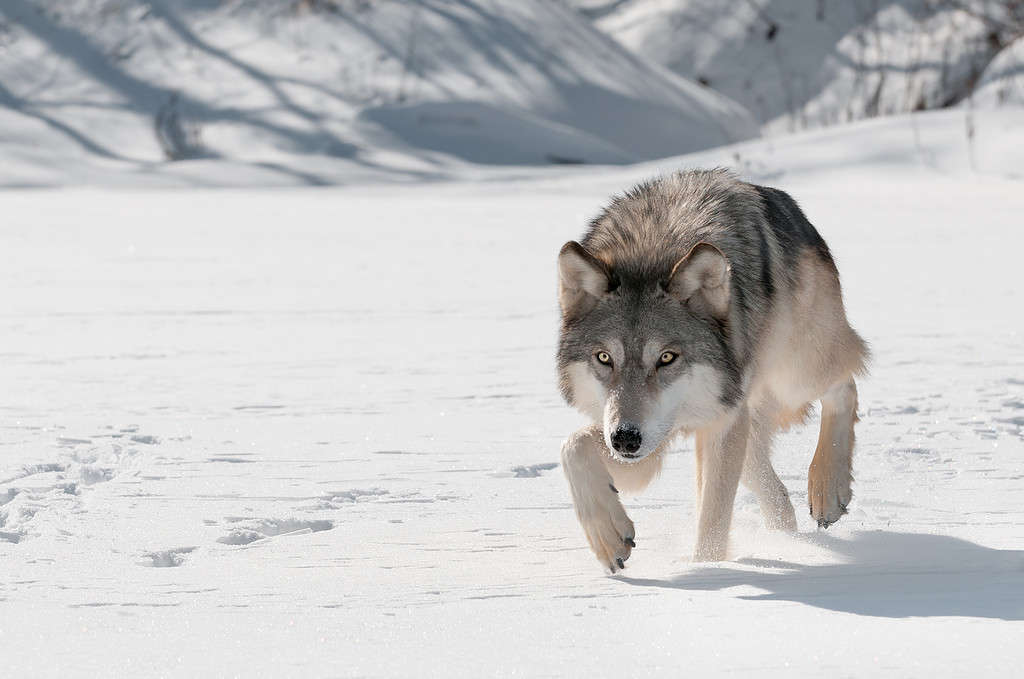
Wolves excel at tracking prey over long distances, allowing them to assess potential targets and drive them to favorable hunting terrain.
©Holly Kuchera/iStock via Getty Images
4. Herding
The lean, swift females of the pack often take on the role of herder, controlling the direction of the prey, preventing escape, and causing confusion by darting in and out of the herd. The larger, more powerful wolves typically stay in the rear, ready to take down an animal struggling to evade the herding pressures.
5. How Do Wolves Hunt: Ambushing
While wolves tend to hunt in packs through endurance strategies and pack cooperation, they also use ambush strategies. Wolves hunting alone or targeting certain prey may use concealment and sudden attack to capture their meal. From late spring through early fall, wolves hunt smaller game alone or in reduced groups. In a 2018 study, researchers proved that wolves use ambush strategies when hunting beavers. Previous studies have suggested that wolves use ambush strategies to hunt beavers, but the 2018 study provided the first video-recorded confirmation. The recording confirmed that wolves employ three components in hunting beavers: waiting near areas inhabited by beavers, concealing themselves, and immediately attacking a beaver approaching within striking distance.
6. Deliver Debilitating Wounds
When hunting larger prey, wolves are typically unable to kill their prey immediately. Instead, they must deliver debilitating wounds to stop the animal from fleeing or fighting back. The attack is the most dangerous part for the wolves, especially when targeting large, powerful animals such as bison. One kick or gouge of the horns from a bison can kill or severely injure a wolf. To best protect themselves, wolves typically attack the sides or neck of the animal, aiming to avoid horns and legs. Once a wolf latches on, the others immediately join in to bring down large and powerful prey.
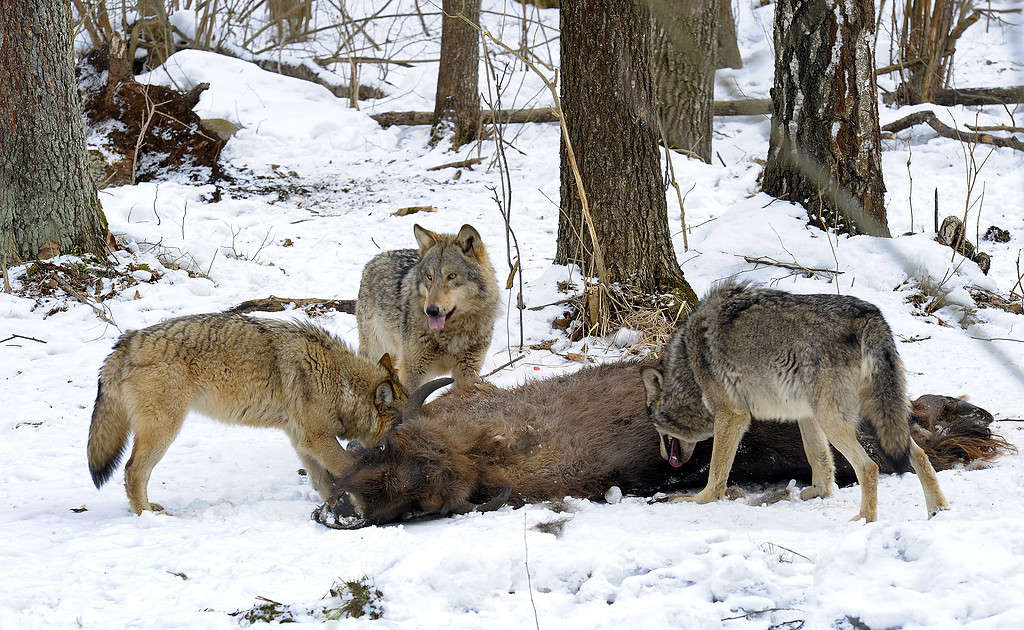
Wolves must deliver debilitating wounds to take down much larger and more powerful prey.
©Film Studio Aves/iStock / Getty Images Plus via Getty Images
The photo featured at the top of this post is © Michael Roeder/Shutterstock.com
Thank you for reading! Have some feedback for us? Contact the AZ Animals editorial team.




